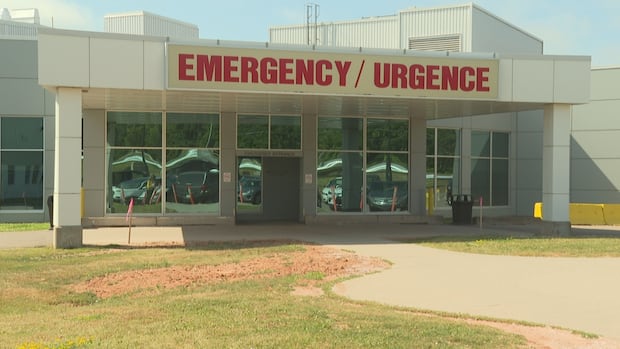I lean against the cool brick wall outside Queen Elizabeth Hospital’s emergency department, watching as another ambulance pulls in. It’s a cloudless July afternoon in Charlottetown, the kind that draws thousands of visitors to Prince Edward Island’s red shores and Anne of Green Gables attractions. But inside these walls, a different reality unfolds.
“We prepare for it every year, but this summer feels different,” says Dr. Katherine Chen, an emergency physician who’s just finished a 12-hour shift. Her eyes carry the weight of sleepless nights. “Our waiting room has been consistently at 150% capacity since Canada Day.”
PEI’s summer hospital strain has become an annual challenge, but healthcare workers describe this year’s situation as particularly acute. The island’s population of roughly 170,000 swells dramatically during tourist season, sometimes doubling in prime locations. This influx creates a perfect storm: more patients seeking care in a system already stretched thin by staffing shortages and limited beds.
At the Queen Elizabeth Hospital, the island’s main referral center, the emergency department was designed to accommodate about 100 patients daily. Staff report regularly seeing 140-160 during peak summer weeks.
“It’s not just the volume—it’s the acuity,” explains Nurse Manager Tina MacLeod, who’s worked here for 22 years. “We see everything from serious cardiac events to broken bones from cycling accidents to severe sunburns and dehydration. And these are people who don’t have family doctors here or know where to access appropriate care.”
When I visited the hospital’s waiting room last Tuesday evening, the scene was telling. A mix of worried parents with sunburned children, elderly couples clutching medication lists, and young adults with sports injuries filled nearly every chair. A digital board displayed estimated wait times: 4+ hours for non-urgent cases.
Among those waiting was the Johnson family from Ontario. Their 8-year-old daughter had developed a high fever and rash during their cottage stay in Cavendish.
“We’ve been here three hours already,” James Johnson told me, bouncing his restless daughter on his knee. “Back home, we’d go to our family doctor or a walk-in clinic, but we don’t know what’s available here.”
This knowledge gap compounds the problem. Health PEI has attempted to address this through its seasonal health services awareness campaign, directing tourists with non-emergency needs to walk-in clinics and pharmacists. But the message isn’t always reaching visitors before they arrive at the ER.
Data from Health PEI shows a 28% increase in emergency department visits during July and August compared to winter months. Approximately 30% of these summer visits are from non-residents, according to their most recent publicly available statistics.
Dr. Michael Gardam, CEO of Health PEI, acknowledges the challenges. “Our healthcare system is designed primarily for our year-round population,” he explains. “The seasonal influx puts tremendous pressure on resources that are already limited. We’re not Toronto or Montreal—we can’t easily scale up and down.”
The strain extends beyond emergency departments. Laboratory services, diagnostic imaging, and pharmacy services all feel the impact. Even securing temporary accommodation for traveling healthcare workers becomes more difficult—and expensive—during tourist season, creating barriers to bringing in relief staff.
For year-round residents like Catherine Arsenault, who lives with a chronic condition requiring occasional emergency care, the summer surge means additional anxiety.
“I try to avoid going to the hospital in summer unless it’s absolutely necessary,” she tells me at a community health center in Stratford. “Last August, I waited seven hours for care that normally takes three. I understand tourists need help too, but it’s frustrating when you live here and pay taxes here.”
The challenges aren’t unique to PEI. Across Canada, tourist destinations from Tofino to Cape Breton face similar seasonal pressures. But PEI’s small size and limited healthcare infrastructure make the impact particularly pronounced.
Healthcare workers have proposed several solutions. Dr. Chen suggests dedicated urgent care centers in tourist hubs like Cavendish and Summerside during peak season. Others advocate for temporary fee structures for non-resident, non-emergency care to offset costs and potentially discourage inappropriate ER use.
The province has implemented some measures. This summer, Health PEI extended hours at some walk-in clinics and introduced a pilot program where pharmacists can assess and treat certain common conditions. They’ve also hired dedicated patient navigators who help direct visitors to appropriate levels of care.
But longer-term solutions require addressing the baseline staffing challenges. PEI currently has over 30,000 residents without a family doctor—the highest per capita rate in Atlantic Canada. Recruiting healthcare professionals to the island remains difficult despite incentive programs.
“We need to view this as both a challenge and an opportunity,” says Yvonne Deagle, a healthcare policy analyst with the University of Prince Edward Island. “Tourism is vital to our economy, but we need sustainable healthcare funding models that recognize these seasonal demands.”
As evening approaches, I watch the hospital parking lot fill and empty in cycles. A young couple exits the emergency department, looking relieved. An elderly man with a cane moves slowly toward the entrance, his face grimacing with each step.
Dr. Chen emerges again, now in street clothes, heading home after her extended shift. She pauses to look back at the building.
“Most of us choose to work here because we love this island,” she says. “We want visitors to experience PEI at its best—including receiving good care if they need it. We just need the resources to make that possible for everyone.”
As PEI continues attracting record numbers of tourists, finding balance between welcoming visitors and maintaining healthcare access for residents remains an evolving challenge—one that requires more than seasonal solutions.






